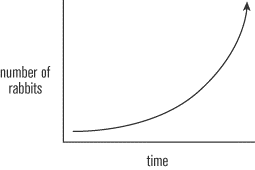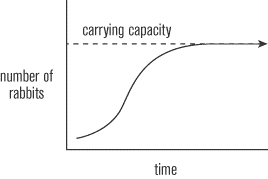Lesson: Chapter - 10
Populations
Ecologists are interested in the interactions between organisms. Since it takes more than one organism to have an interaction, the basic unit of ecology is the population. A population is a group of individuals that interbreed and share the same gene pool. While every individual in a species has the capacity to interbreed with any other individual, a population is a group of organisms that exist in the same specific geographic locale and actually are interbreeding. All the killer whales in the ocean make up a species, but only the killer whales that actually live and migrate together—only the killer whales that actually interbreed—make up a specific population.
Populations are much more than the sum of their parts: a population displays patterns and concerns that are not applicable to an individual organism. Whereas an individual is concerned with living for as long as possible and having as many offspring as it can, a population is concerned with maintaining its number given the resources at hand.
Video Population Growth
v>
Population Growth
A vital characteristic of a population is the rate at which it grows.
The rate of population growth depends on a variety of factors,
including birth rate, death rate, initial population size, and
resources. With unlimited resources, a population can expand very
rapidly. Two rabbits that live in Rabbit Utopia and have five male and
five female offspring every four months will produce a population of
12 rabbits after four months and 72 rabbits after eight months. Sounds
like nothing, right? After one year, the population will be 432
rabbits. After two years, there will be 93,312 rabbits. And after
three years, the population will be more than 20 million rabbits.
Video Lesson - Population in Ecosystem
This
rabbit population is following the trend of exponential population
growth, in which there is nothing to limit the growth of a
population and that population correspondingly grows by exponential
factors. A graph of exponential growth looks like this:

Perhaps Rabbit Utopia can grow enough lettuce to support 20 million
rabbits, but normal nature cannot. In nature, when a population is
small, the resources surrounding it are relatively large and the
population will grow at near exponential levels. But as populations
grow larger, they need more food and take up more space, and resources
become tight. Within the population, competition for food and space
grows fierce, predators move in to sample some of the bounty, and
disease increases. These factors slow the growth of the population
well before it reaches stratospheric levels. Eventually, the rate of
population growth approaches zero, and the population comes to rest at
a maximum number of individuals that can be maintained within a given
environment. This value is the carrying capacity of the
population, the point at which birth and death rates are equal.

The carrying capacity of an environment will shift as an environment changes. When there is a drought and less vegetation, the carrying capacity of rabbits in a population will decrease since the environment will not be able to produce enough food. When there is a lot of rain and lush vegetation, the carrying capacity will increase.
Population Growth and Types of Reproduction
Population growth is affected by species’ methods of reproduction. The two most important types of reproduction are asexual and sexual reproduction. Each type of reproduction has benefits and costs.
Asexual reproduction—such as that found in plants that reproduce
by shoots or organisms that reproduce through parthenogenesis—requires
less energy than its sexual counterpart. Because it requires less time
and effort, asexual production allows a population to grow very
quickly. For example, parthenogenesis occurs when an unfertilized egg
develops offspring. Parthenogenesis creates female organisms that are
identical to their mothers; the eggs of these female organisms undergo
parthenogenesis and produce more females. By eliminating the necessity
of males from the reproductive equation, parthenogenesis doubles the
rate at which a population can grow. However, by eliminating males and
sexual reproduction, populations that employ asexual reproduction
limit their gene pool and the resulting diversity among members. In
times when an environment is changing or competitive, the lack of
variation damages these populations’ ability to survive.
Sexual reproduction exhausts more energy and therefore
progresses slowly. A population that reproduces through sexual
reproduction will not grow as rapidly as an asexually reproducing
population, but the sexual population will maintain the diversity of
its gene pool. A sexually reproducing population is therefore more fit
to survive in a changing or competitive environment.
Sexually reproducing organisms have two reproductive substrategies. Organisms such as insects have many small offspring that receive very little or no parental care, reach sexual maturity at a young age, and reproduce only one or a few times. In an environment with abundant resources, this life-history strategy allows species to quickly reproduce and exploit opportunities for population growth. The disadvantage of this strategy is that it produces high mortality and great instability when resources dwindle. The alternative strategy is to bear fewer and larger offspring that receive intensive parental attention, mature gradually, and reproduce several times. Humans employ this strategy and are better suited to thrive in a competitive environment, exhibiting lower mortality rates and longer life spans. The disadvantage here is that the concerted investment of time and energy into a few individuals makes it difficult for a population to surmount large decreases in population size due to disasters or disease.
Next to display next topic in the chapter.
Practice Questions
Test Prep Lessons With Video Lessons and Explained MCQ
Large number of solved practice MCQ with explanations. Video Lessons and 10 Fully explained Grand/Full Tests.